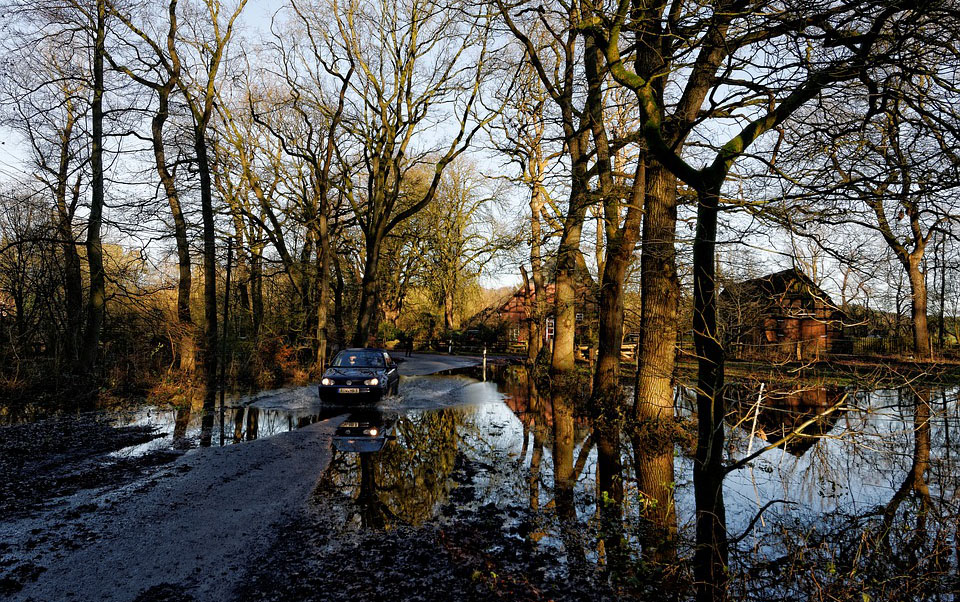This is Part 2 of a three-part series on flood insurance. The first part is here.
As you may know, the world of flood is changing. As of April 1, 2016, the National Flood Insurance Program (NFIP) is implementing changes flowing from the Biggert Waters Flood Insurance Reform Act of 2012 and the Homeowners Flood Insurance Affordability Act of 2014 (HFIAA). These affect residential and non-residential property rates, the process to communicate risk and related processes tied to flood insurance.
An Upstream Challenge for Agents and Consumers Alike
As an agent, you’re dealing with a greater focus on compliance and more regulations wrapped around the NFIP. While working to navigate increased surcharges, fees and assessments that are not eligible for commission, you’re trying to grow your business, mitigate E&O exposures and improve retention. What’s more, the federal program requires underwriting detail that is increasingly complex every day. This may feel like an upstream challenge.
The idea of rising costs and gaps in flood coverage are understandably creating questions for consumers. In the wake of historic flooding across the nation and catastrophic events such as “Superstorm Sandy,” some homeowners are unprepared and unprotected.
Exploring the Benefits of Private Flood
According to Keith Brown, president and CEO of Aon National Flood Services, “NFIP continues to serve a vital need for many Americans now and in the future. ... At the same time, no one product can meet everyone’s needs, so it’s important for independent agents to understand available private flood insurance options, as well.”
There are specific exposures the federal program doesn’t cover, such as swimming pools and spa equipment. If you live on the coast and a hurricane pushes a three-foot wall of water onto your property, the NFIP will offer coverage to help dry out the house and restore the first floor and above, but the NFIP won't cover digging sand out of the pool. What’s more, the NFIP does not cover additional living expenses or personal property in basements, so displaced homeowners or homeowners with built-out basements are left picking up these bills. Living expenses and basements are just two of the types of exposures to consider when weighing flood insurance protection options.
The good news is that private flood options are continuously coming to market. Not every homeowner has the same needs. While price is often the key factor, you’ll find there are considerations that extend beyond price. In many cases, it comes down to educating the consumer about these options.
For instance, policyholders may not be aware that they can supplement NFIP coverages with private options that allow a more customized coverage approach to address their individual needs. By adding private flood insurance to your portfolio, you can offer attractive options, such as:
- Ability to fill gaps in coverage;
- Improved loss settlement (adding replacement cost coverage to all losses);
- Reduced pricing;
- Broad eligibility;
- Shorter wait periods before coverage becomes effective;
- Coverage availability in all flood zones for single- and two- to four-family homes;
- User-friendly application process; and
- Possibly eliminating the need to purchase expensive elevation certificates.
As an example, the NFIP currently limits coverage on residential buildings to $250,000, but many U.S. homes are worth more than that amount. Clients with high-valued homes may want additional coverage in the event of a catastrophic flood. Excess flood coverage enables you to offer higher limits of flood coverage to your clients so that your client may recover more.
See also: Why Flood Is the New Fire (Insurance)
Private Flood Resources and Outreach for Agents
Agents who can effectively communicate risk by using advanced modeling and analytics are becoming more appealing to homeowners. Flood represents a complicated peril, and agents must turn to emerging technology to better educate their customers.
Here are some steps you can take to enhance your flood knowledge, better understand flood risk, decipher changes with respect to emerging exposures and articulate valuable solutions for your clients:
1. Check into the resources available at the state level. Get to know the wholesale channels that agents can tap into to get flood options. Also, NFS has put together the handy visual guide that explains all the NFIP changes, “Making Sense of NFIP Regulatory Changes.”
2. Speak to your carriers. Understand their flood insurance product offerings, and talk to them about your clients’ exposures. Let them know what options you see in the market, and work with your carriers to add programs necessary to remain competitive in today’s changing environment.
3. Become familiar with new user-friendly technologies that help streamline the flood insurance application process. For example, we have developed a proprietary technology with Applied Semcat and Vertafore, the only comparative raters that allow agents to quote flood insurance at the same time they quote homeowner’s insurance. It allows agents to provide a premium indication and personalized flood proposal on all homeowner quotes. Using this application, agents can easily complete a flood policy by benefiting from the single sign-on and removal of duplicate inputs.
These are just a few examples. Becoming well-versed in private flood insurance options and contracting to write flood insurance plans is a way to help build out your portfolio, retain more clients and add value to the services you provide your clients.








